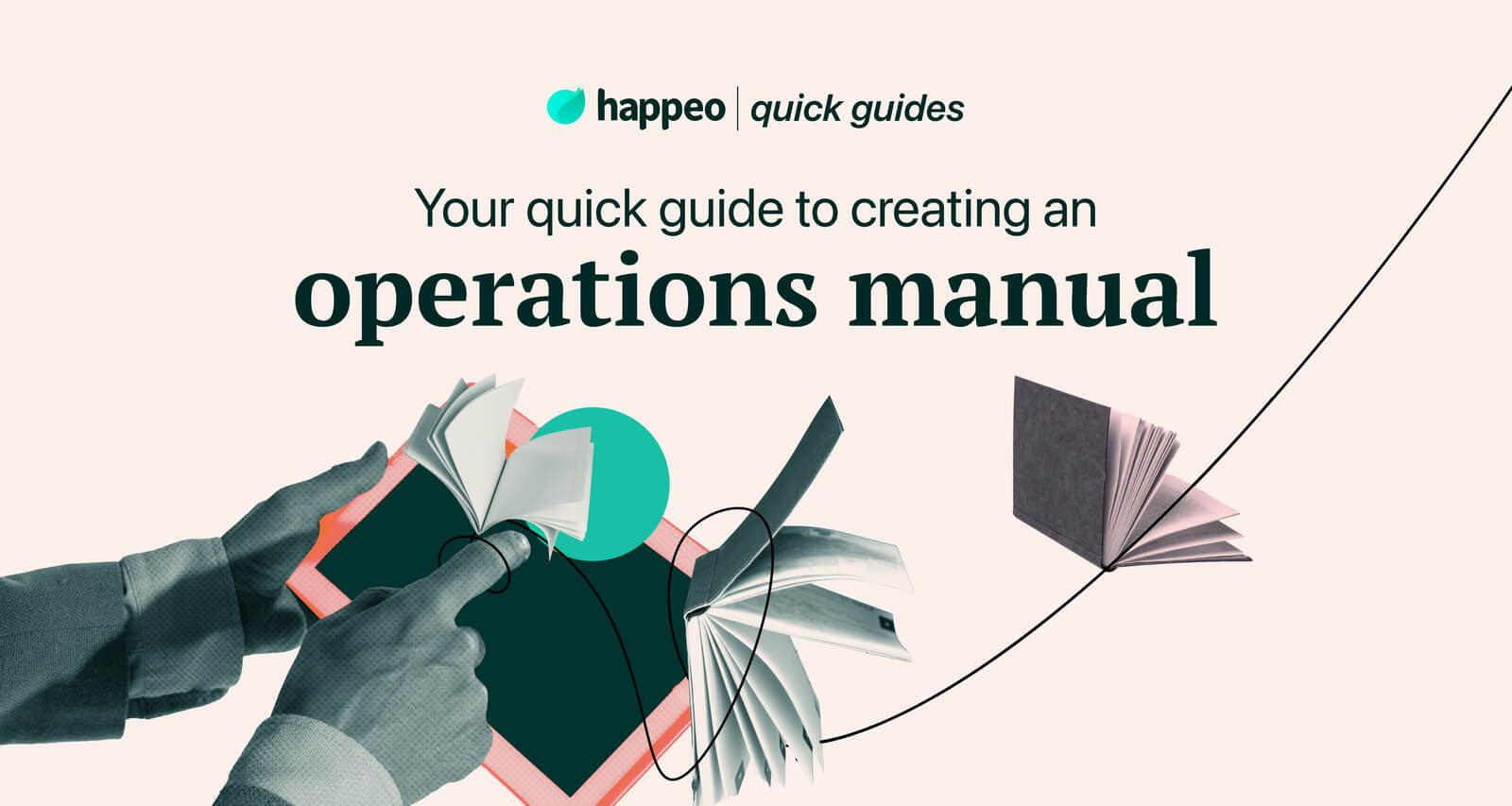
Quick guides Knowledge Management
How to migrate to a modern intranet solution in 9 steps

8 mins read
Start building your digital home with Happeo
Request a demoQuick guides Knowledge Management
Product
Features
Solutions
Happeo for
Use cases
Resources
Explore
Support
Happeo For
Use cases
Comparisons
Explore
Support
Recent

Jonathan Davies
8 mins read
Table of Contents
Admitting it’s time for a change is never easy. But if your intranet or Internal Comms platform is clunky, poorly used, or just isn’t hitting the mark for some reason, you might be considering making the switch to a more modern intranet solution.
These days, companies need intranets that can both provide editorialized, top-down content, and act as a convenient digital workplace for collaborative, social communications. Solutions that integrate with the other tools your teams use on a day-to-day basis. And that will actually make their lives easier, instead of just giving them another piece of software to get their heads around.
But planning an intranet migration is a big undertaking, and you shouldn’t go into it without some careful thought. In this article, we’ll share a simple, step-by-step guide to help make sure the transition to your new intranet is as smooth and pain-free as possible.
There are a lot of different factors to consider when you’re implementing a new intranet solution. First, you need to choose a platform that will meet your organization’s needs — not just now, but in the future too.
You’ll need to develop a solid plan for training your employees on how to use your new intranet, and making it the go-to place for knowledge sharing, collaboration, and communication within your organization.
And you’ll also need to decide on the best way to migrate all of the content that’s sitting on your legacy platform (that’s if you should be migrating it at all).
Overwhelmed? Don’t worry.
With our nine-step intranet migration plan, switching to a new intranet solution doesn’t need to be a headache. Here are the steps to follow:
The very first stage of migrating to a new intranet platform is determining who your intranet champions are going to be. Who will be in charge of rolling out your new intranet? Who are the early adopters who are willing to pilot the program and provide their feedback so it’s ready to launch?
And before any of that, do you have buy-in from your company’s leaders? Without the support of the higher-ups, thought-leaders, and influencers in your organization, there’s a good chance your intranet will flop. That means it’s crucial to identify your intranet champions early — and get them as excited about your intranet project as you are.
The next step is to identify what your intranet needs to achieve for your organization. Are you looking for social collaboration features that allow your employees to connect with each other? An employee directory to act as a digital Rolodex, so everyone understands who everyone is?
Or is your priority to ensure it’s quick and easy to find information? If so, a solution with a robust, Universal Search function that allows employees to search simultaneously across multiple locations could be the answer.
It’s also worth considering what the launch process for your new intranet will look like. You might think that most intranet solutions probably have a similar ramp-up time, but that couldn't be further from the truth. For example, Happeo’s intranet can be launched in just 6–8 weeks, compared to the industry average of 1.2 years.
Whichever platform you choose, you need to make sure it will meet your organization’s needs — now and in the future. That means taking a deep dive into the features and functions that different platforms offer. Need help evaluating your options? Download our free guide to start comparing intranet solutions.
The next step in the process is to confirm the timeline for your intranet migration. There’s no one correct way to do this, but here’s an example of what a timeline could look like:
Phase 1: Preparing
Phase 2: Planning
Phase 3: Preparing for launch
Phase 4: Testing
Phase 5: Launching
You should also plan to continue to train employees, seek feedback and make adjustments beyond your launch date, to ensure your intranet is performing for your organization.
While you should already be working with an intranet team made up of various decision-makers, leaders, and project management experts to develop and implement your intranet migration plan, it’s also important to inform the intranet’s end users — your employees — of the upcoming change. This will help them to prepare, and (if you do it right) get them excited about the new system before it’s even launched.
To make sure everyone’s on board, it’s best to explain:
Migrating content from one intranet platform to another can seem like an immense and difficult undertaking — but it doesn’t have to be. Let’s break the process down into more manageable phases:
Inventory intranet content
The first phase in a successful intranet content migration is determining what content you actually have. Usually, the content you want to migrate will be stored on your existing intranet, but you may also want to transfer content from other places, like shared cloud drives or even documents like your employee handbook.
Audit intranet content
Intranets and shared drives can easily get cluttered, especially without a structured system in place for managing information. And you don’t want your new intranet to be a mess of content before you’ve even launched it — or you could see low user adoption.
This means that there are decisions to be made about what content you should migrate, and what content that could be retired. For example, if your old solution was poorly used, there’s a good chance that the content stored there is out of date, in which case there’s probably no point in transferring it to the new platform.
Map your intranet content
At this stage, your focus will shift from the content as it exists on your old intranet platform to the way it will look when you launch your new solution. Implementing a new system is an opportunity to create a more logical, more user-friendly intranet information architecture — but that doesn’t happen by accident.
Take the time to map out how your intranet will look by planning a structure or framework for how content will be categorized, organized, and labeled. Developing some basic intranet governance guidelines at this stage can help to save you a lot of time and confusion down the line.
Migrate intranet content
The last stage in a successful migration is, of course, to actually migrate your intranet content over to your new platform. For larger intranets, you’ll likely need to put together a team to achieve this. It’s also important to have a plan for migrating content: determining which content should be moved first and how the actual migration will be done ahead of time can help you stay organized and get your intranet content migration done as efficiently as possible.
One of the most important considerations when choosing an intranet solution is how it will work with the other tools that your employees already use. This might mean building integrations or setting up any integrations that are already built into your chosen platform.
Happeo, for example, comes with in-built rich integrations with Microsoft 365 and Google Workspace, as well as a number of other popular tools. This means that can continue chatting, communicating, and collaborating in the same way they always have, with the added convenience of accessing everything from one central location.
You’re almost there! But before fully rolling out your new platform, it’s important to test the waters with a few early adopters. By allowing just a select few employees to test-drive your new intranet, you’ll be able to gather valuable feedback that will help you to iterate and improve it before opening it up to the whole company.
These employees will also be key in convincing other users to get on board with your new intranet, helping you to increase employee adoption and make your intranet the go-to place for information sharing and collaboration.
We’ve reached the most important stage of your intranet migration, launching your new intranet. This step can involve a bit of nail-biting since you won’t really know how effective your new intranet will be until it’s rolled out to everyone. However, as long as you have followed the steps outlined above, you should have nothing to worry about.
Be sure to inform employees of the date you’re planning on launching the new intranet ahead of time, so they’re ready to get set up.
Of course, your intranet migration isn’t over just because you’ve set up the new platform. Now is the time to onboard all of your users, and provide in-depth training on how to use the new intranet. You might want to set up group training sessions, or even design an interactive training program that shows employees how the intranet works.
It’s also a good idea to provide an easy mechanism for feedback, especially in the early stages of your intranet implementation, so that employees can report any problems or suggest improvements.
Migrating to a new intranet platform is never easy, and there are a lot of different people, processes and planning stages involved. But by choosing the right intranet solution, you can have the best chance of a smooth transition and a successful migration to your new digital workplace.
As we mentioned above, Happeo’s ramp-up time is industry-leading: we could help you get your new intranet up and running in as little as six weeks.
Happeo’s seamless integrations, automations, and analytics give you all the tools you need to implement your intranet easily, and in record time. Plus, our expert team of deployment consultants, account managers, and customer success specialists will be there to help you if you run into any problems.
Could Happeo be the right solution for your intranet upgrade? Request a free demo to find out more.
